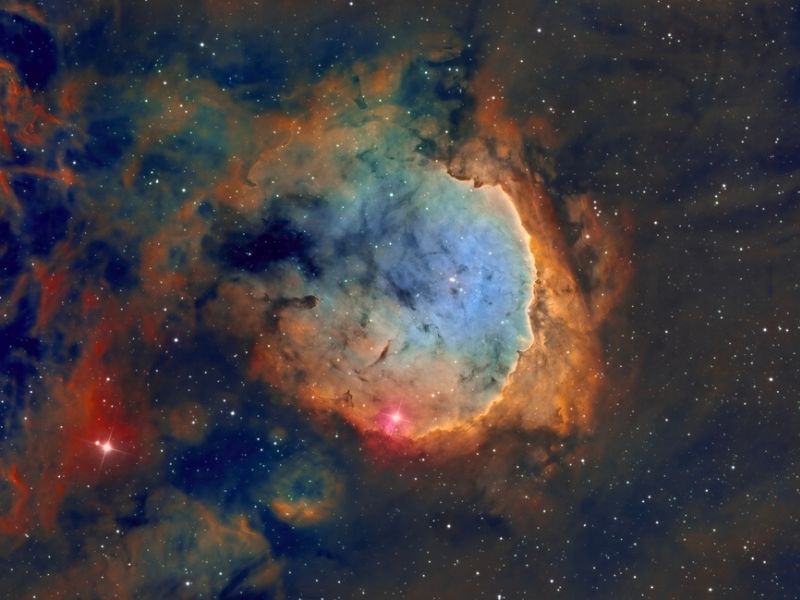The universe is a vast and wondrous expanse filled with mysteries that continue to captivate scientists and philosophers alike. Among the most mysterious phenomena are dark matter and dark energy, two elusive components that shape the fabric of the cosmos. In this article, we will explore what we currently understand about these cosmic mysteries, as well as the lingering questions that remain unanswered.

Image Credit: Shutterstock/KafeGsi
Dark Matter: The Invisible Enigma
Dark matter, comprising around 85% of the universe’s matter, eludes direct observation due to its inability to emit, absorb, or reflect light. Its presence is inferred from its gravitational effects on visible matter. Essential for galaxy formation and structure, dark matter’s gravitational pull keeps galaxies intact. However, its true nature remains a mystery, with theories suggesting it could be composed of undiscovered subatomic particles like weakly interacting massive particles (WIMPs) or axions. However, experimental confirmation of these particles is yet to be achieved.
Dark Energy: A Cosmic Accelerator
Dark energy, accounting for roughly 70% of the universe’s energy, remains a profound enigma. Unlike dark matter, which influences cosmic structures, dark energy operates on the universe’s most extensive scale, propelling its expansion. Astronomers were astonished by its existence when late-1990s observations of distant supernovae unveiled an unforeseen acceleration in the universe’s expansion. While the precise nature of dark energy remains mysterious, scientists hypothesize it could be an intrinsic characteristic of space or a manifestation of a novel fundamental force.

Image Credit: Shutterstock/KafeGsi
Unanswered Questions And Future Exploration
The fascination with the universe’s mysteries drives scientific inquiry as we strive to uncover the secrets that shape the cosmos. Despite progress in understanding dark matter and dark energy, many questions remain. Their nature, origins, and interactions with the universe continue to challenge scientists. Various methods, including astronomical observations, particle physics experiments, and theoretical modeling, are employed to unravel these mysteries. Advanced telescopes like the James Webb Space Telescope offer promising insights. With each exploration of dark matter and dark energy, our understanding deepens, revealing our place in the vast cosmic tapestry.